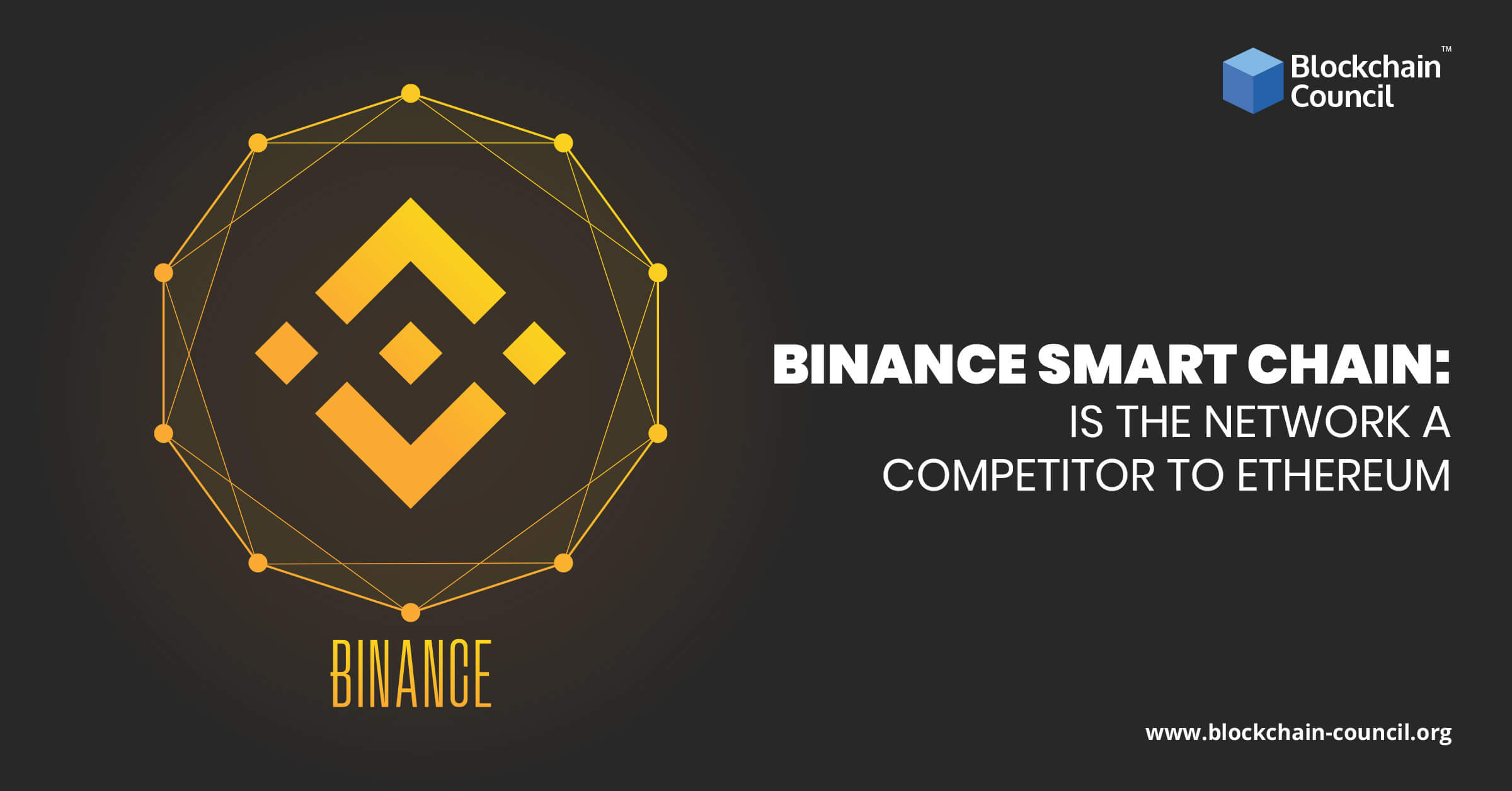
- Avinandan Banerjee
- November 17, 2021
Binance Coin (BNB) – the native coin of the leading cryptocurrency exchange Binance and the blockchain network Binance Smart Chain (BSC) – since the beginning of 2021 has grown in value 17 times and took the third place in terms of capitalization, giving way only to Bitcoin and Ether. This rally is explained by the mass transition of users from Ethereum to DeFi-protocols running on Binance Smart Chain. And the number of new addresses in the BSC blockchain network increased 3 times during this period. In light of this, we looked into how the BSC network is structured, what its advantages are compared to Ethereum, and whether it can compete with Ethereum in the DeFi sector.
The rapid growth of BNB
Today, Binance Coin is trading around $652. At its peak on May 4, 2021, the price per Coin was as high as $675.
Thus, the coin has grown by 1700% since the beginning of the year and by about 60% in the last month. BNB has a market capitalization of $108 billion, beating the largest stablecoin Tether (USDT) by about $35 billion. At the beginning of January 2021, BNB had a capitalization of only about $5.4 billion.
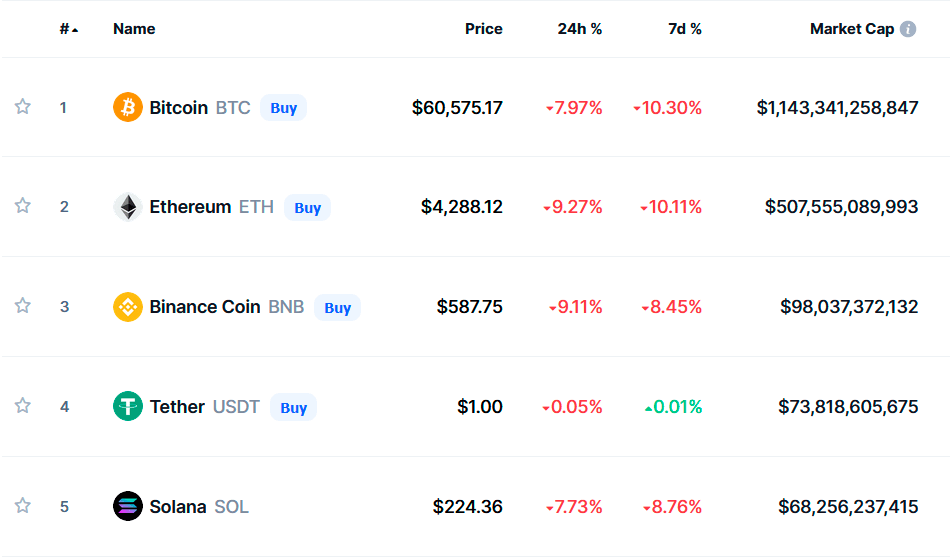
The five largest coins by capitalization according to CoinMarketCap.com.
BNB also experienced a significant surge in daily trading volumes in 2021, reaching a record high of $22 billion on February 20. However, since mid-June, the excitement around BNB has somewhat subsided, and in recent months the figure has been in the $1-2.5 billion range.
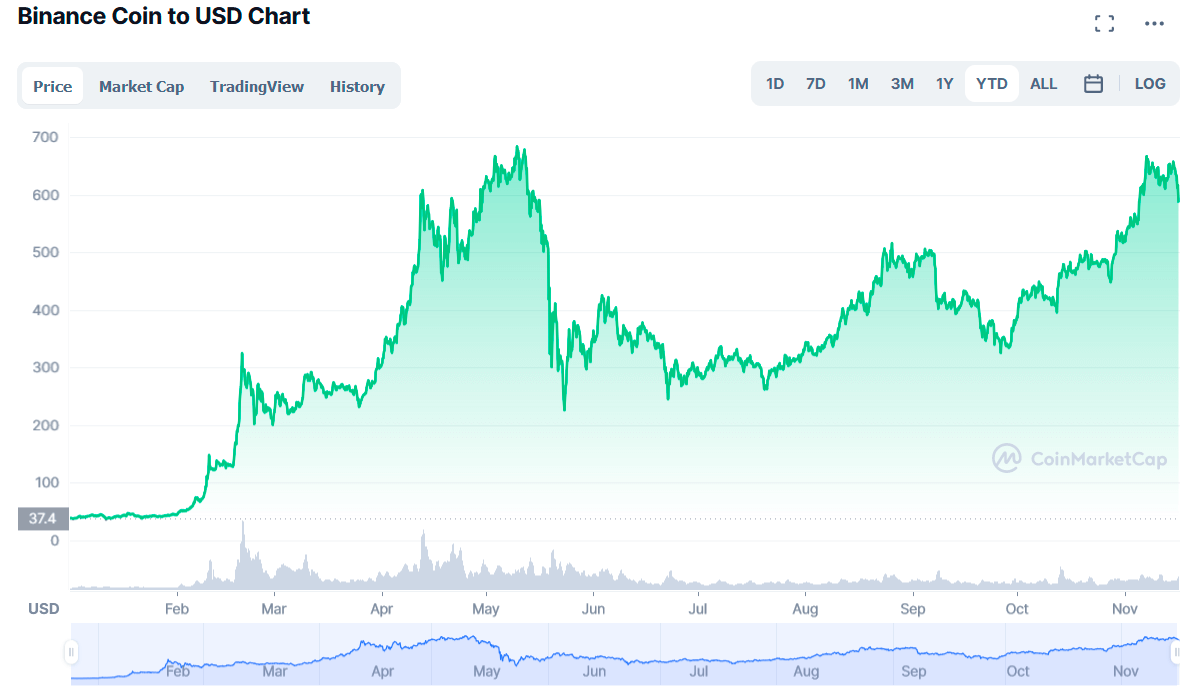
BNB price chart for the past year. Source
The reason for the growth of BNB is the migration of users to Binance Smart Chain
This rapid rise in the value of BNB has come as a surprise to many analysts. You won’t find posts online with bold predictions predicting a 17-fold increase in the price of BNB in 10 months. We think that the coin’s rally is due to the coincidence of several circumstances:
- In 2021, Binance had its three largest quarterly burnouts of BNB. In October, the exchange “wiped out” 1.33 million coins worth $640 million.
- In early February, Binance launched a beta version of its own payment service Binance Pay, which should become the crypto-analogue of PayPal. In the service you can make transfers, make purchases and exchange cryptocurrencies into fiat currencies. So far, Binance Pay only supports five coins – BNB, BUSD, BTC, ETH, SXP and one fiat currency – the euro.
- But the real catalyst for the rally was probably the mass transition of users to DeFi projects in Binance Smart Chain – a blockchain for implementation of smart contracts and decentralized applications (dApps), using BNB as a native coin.
The number of unique addresses in BSC is growing avalanche-like: from 651,000 at the beginning of January to 114 million on February 10, 2021.
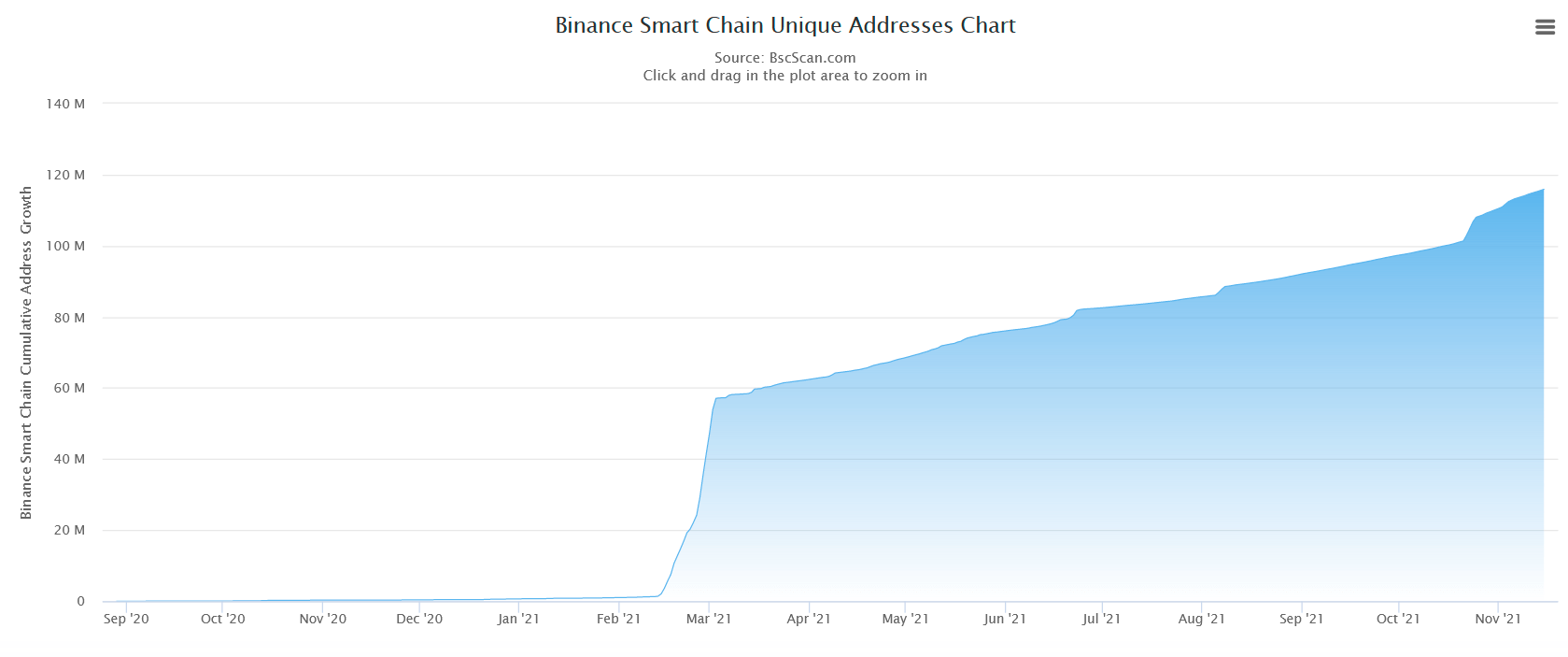
Graph of the number of unique addresses in BSC. Source
According to DappRadar, BSC has overtaken the Ethereum network in terms of the number of protocol users. Thus, at the beginning of the year, only 149,000 people used the BSC network compared to 1 million for ETH. However, by November this ratio changed to 7 million and 836,000 respectively.

The number of unique Ethereum users (blue chart) and BSC users (purple chart). Source
Users are looking for low-cost transactions
Users’ shift to BSCs reflects the demand for low-cost DeFi products. The cost of making a transfer on Ethereum-based decentralized crypto exchange Uniswap has soared to double digits – even a simple transfer from a single wallet will cost a user $10-$15. Gas fees are probably the main factor forcing traders to switch from Ethereum to other blockchains in DeFi.
For example, PancakeSwap, the main decentralized exchange on BSC, saw parabolic growth in February, briefly overtaking segment leader Uniswap in daily trading volume. According to DappRadar, PancakeSwap now has 43,000 unique users per day, while Uniswap has 38,000.
PancakeSwap is actually a clone of the decentralized crypto exchanges Uniswap and SushiSwap, only it works on BSC instead of Ethereum – the exchange has lower fees and faster transactions.
For example, a transaction at PancakeSwap costs only a couple of cents. The low commissions open up Pancakeswap to a large number of users who want to trade a small amount, such as $100. Among the reasons for the growth of PancakeSwap users may also be the expansion of functionality: gamification elements and NFT – non-exchangeable tokens – were recently added to the site.
BNB is used as part of the Binance Smart Chain consensus mechanism. PancakeSwap has its own CAKE token, but BNB is used to create various liquidity pools where users place their own assets and receive a portion of the commission for each transaction made on PancakeSwap.
So the rise in the price of BNB is logical. However, CAKE, too, has risen about 1,500% since its release last September. It traded for $1.06 at the start and is now worth about $15.
Ethereum’s transaction fees continue to be quite high as the network operates near capacity. This has apparently led users to look for more efficient alternatives, and Binance Smart Chain is a great option for that.
BSC charges only a few cents per transaction, and the speed of the network reaches around 300 transactions per second. This contrasts with Ethereum’s huge transaction fees – at highs they can reach over $100. That said, Ethereum is also not known for its high transaction processing speeds at this stage. It is about 15 transactions per second.
According to BitInfo, the average fee per ETH transaction has consistently exceeded $60 in November 2021. BSC Scan data shows that the average commission in BSC as of Nov. 9 is about 6.47 Gwei. The average “gas” price in Ethereum on the same day was about 164 Gwei. This is more than 25 times more expensive.
Because of the high commissions in Ethereum DeFi becomes profitable only for traders with a lot of money – for small investors with $100 in the pocket decentralized finance is not advantageous.
Moreover, according to BSC Scan, in February BSC also overtook Ethereum in the number of transactions processed per day. For example, on November 9, BSC had 11 million transactions compared to Ethereum’s 1.3 million.
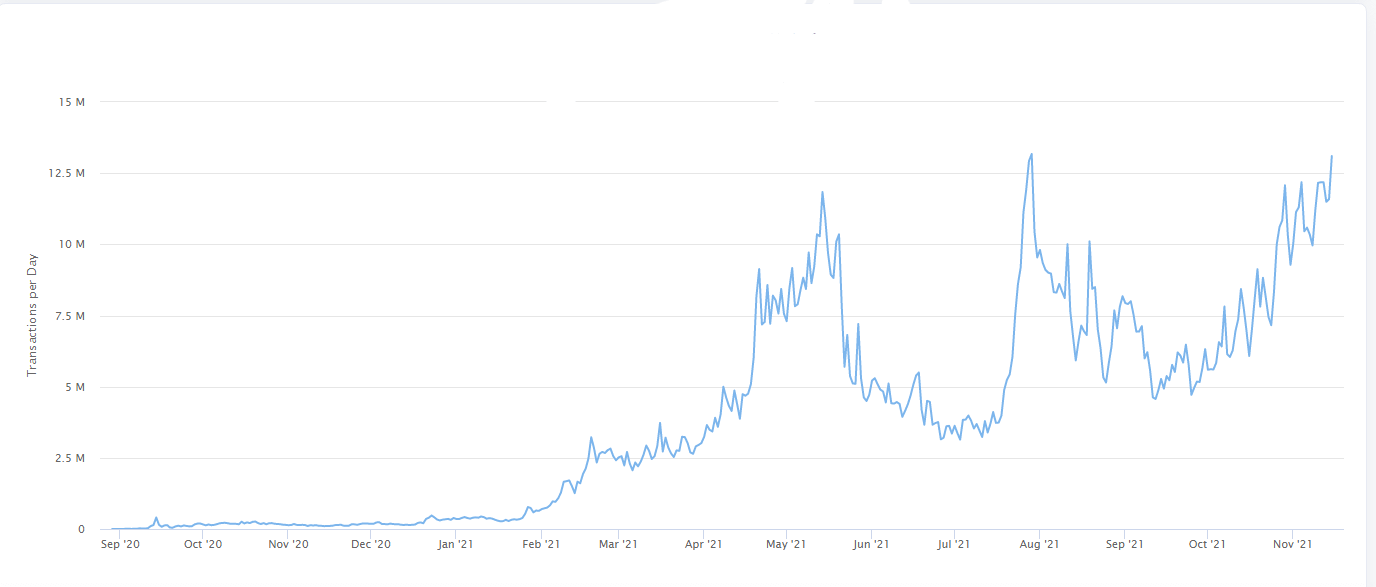
BSC daily transaction volume chart. Source
How Binance Smart Chain Works
Binance Chain and Binance Smart Chain are different networks and work in parallel to each other. Although they are both considered Binance networks, it is not possible to transfer assets between them because even the wallet formats of these networks are different. In fact, the situation is even more complicated because there are not two BNB networks, but three. Unfortunately, as a rule, wallet services do not warn users about this, which can lead to surprises when transferring BNB coins. This does not apply to the web wallet https://bnbwall.com/, the site of which contains information about the possible consequences of attempts to transfer funds between different Binance networks.
The main Binance Smart Chain network was launched in September 2020. It was a complement to the Binance Chain blockchain launched in the spring of 2019.
Binance Chain is a blockchain to support the decentralized Binance DEX exchange, whose users can trade directly with each other. Binance Smart Chain is a project for developers of decentralized applications. The main differences of Binance Smart Chain:
- Ability to run smart contracts;
- Compatibility with Ethereum, i.e. the ability to transfer dApps from ethereum to BSC;
- Ability to create dApps and DeFi projects;
- BNB Stacking.
BNB is a native coin of both networks. In Binance Chain, the coin is used to pay fees on Binance DEX; in BSC, it is used to deploy smart contracts, stacking and token exchange.
Binance Chain runs on the Proof-of-Stake consensus algorithm, while Binance Smart Chain runs on a specially designed hybrid Proof-of-Staked Authority (PoSA) that combines elements of Proof-of-Stake and Proof-of-Authority.
In PoSA, blockchain generation validators “freeze” BNB in stacks, but are not rewarded for doing so, contenting themselves only with transaction fees.
To avoid inflation, Binance quarterly “burns” – that is, permanently withdraws some BNB coins from circulation. This reduces the supply of coins while increasing demand or keeping it stable. Starting with an initial maximum BNB supply of 200 million, “burning” is expected to continue until the coin supply reaches 100 million. Over the past three and a half years, Binance has burned about 13% of the total BNB supply.
There are dozens of decentralized applications running on BSC. Four of them are particularly popular in terms of unique active wallets and transaction volumes – they are PancakeSwap, Biswap, Venus and Alpaca Finance. For this reason, they are among the top 10 decentralized apps on DappRadar.
Binance Smart Chain competing with Ethereum
It is now becoming very expensive for the DeFi sector to use ETH. Meanwhile, Layer 2 solutions for the Ethereum blockchain are not yet ready, and the functionality of some promising alternatives is not extensive.
While Ethereum continues to dominate the DeFi space, it is unable to satisfy the frenzy around decentralized finance. If the upgrade to Ethereum 2.0 is delayed, the network risks losing leadership in the DeFi sector.
The Binance team, on the other hand, has skillfully exploited the increased excitement around DeFi projects. Thanks to BSC, users looking for lower commissions and willing to put up with centralization now have an alternative.
Last year, amid the rapid growth of the DeFi sector, we also saw an increase in the popularity of blockchains that claim to compete with Ethereum. These include Cardano, Cosmos, Polkadot, Elrond and Binance Smart Chain.
The latter has advantages over the others: compatibility with Ethereum tokens, maximum number of users and, most importantly, the ecosystem of the largest cryptocurrency exchange, which is constantly expanding.
However, Binance Smart Chain has many disadvantages as well. First, the network is too centralized. Unlike Ethereum, Binance Smart Chain is a centralized blockchain environment, with only 21 nodes controlled or affiliated with Binance responsible for keeping it running. This discourages not only users but also developers.
Second, BSC has only a few successful projects so far, including Venus and PancakeSwap. Ethereum has a decentralized ecosystem with thousands of successful projects, independent from each other. Another problem of BSC is that there are no original ideas there yet, only copies of Ethereum projects.
Essentially, Ethereum and BSC offer two alternative approaches to DeFi-project development: a decentralized but slow and expensive network, or a centralized but fast blockchain. Looking at the number of Ethereum projects, it might seem that most developers have chosen the first option. However, this is not quite the case.
The bet on Ethereum was made before its problems with scaling became apparent. If the upgrade to state 2.0 fails to resolve this problem quickly, the economic benefits will justify centralization. And there have already been early hints that this scenario will come to fruition.
For example, major platforms Harvest Finance and Value DeFi, originally running on Ethereum, announced on February 12 that they would switch to Binance Smart Chain just for economic reasons. DeFi is growing so fast that developers simply do not have time to wait for Ethereum to finally upgrade and solve all its problems.
We believe Ethereum will remain the main blockchain of the DeFi- sector in the near future. But in the long term, BSC has an excellent chance of stripping Ethereum of its monopoly.
Decentralization vs Centralization
While Ethereum developers have been working for years on how to make Ethereum more scalable and cheaper without hurting decentralization, Binance has taken a different path.
The exchange offers DeFi projects a fast listing on the largest marketplace and access to a huge audience. But will it be enough to eclipse all the benefits of Ethereum? Time and preferences of DeFi- sector participants will show.

































































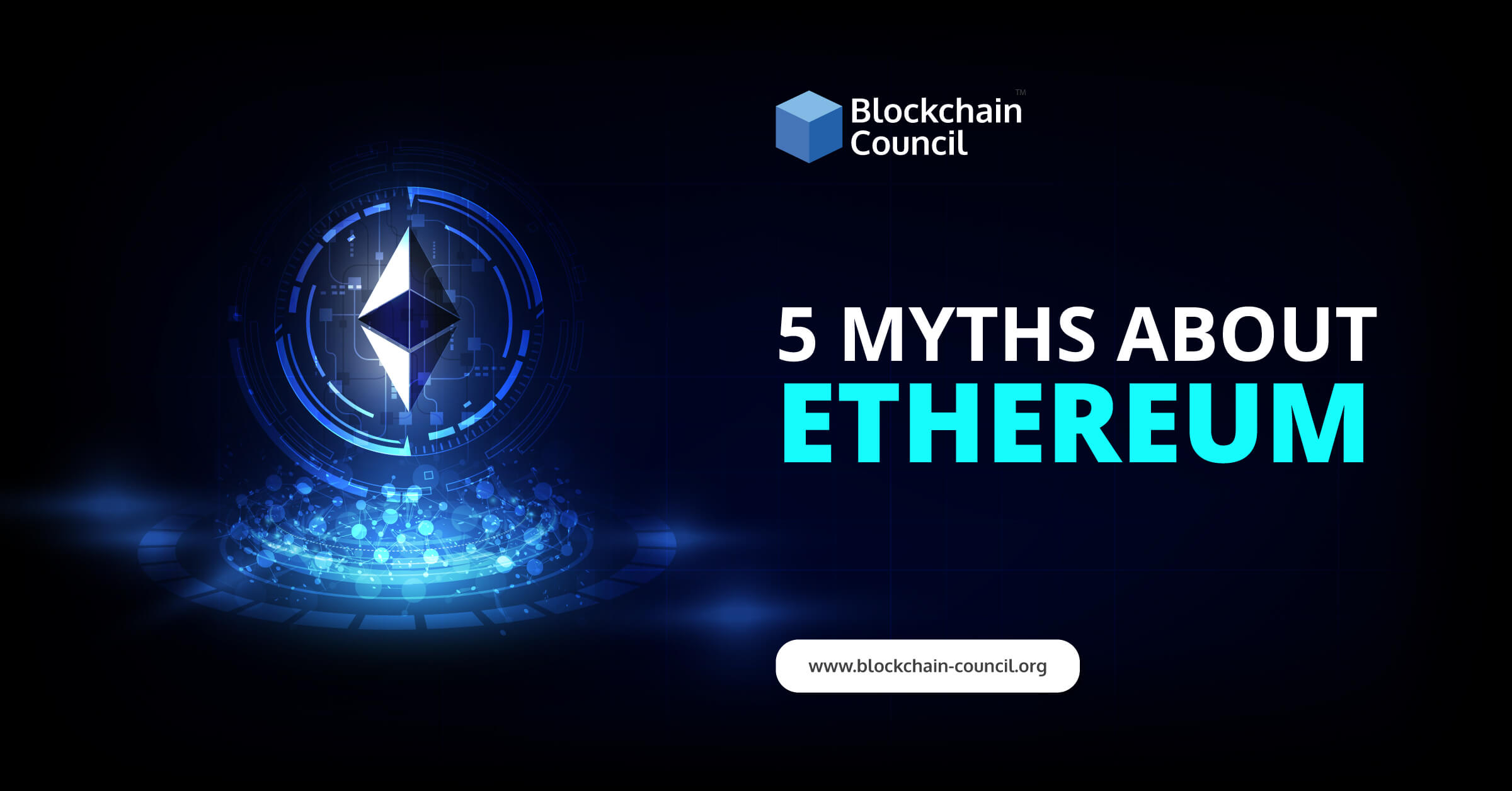
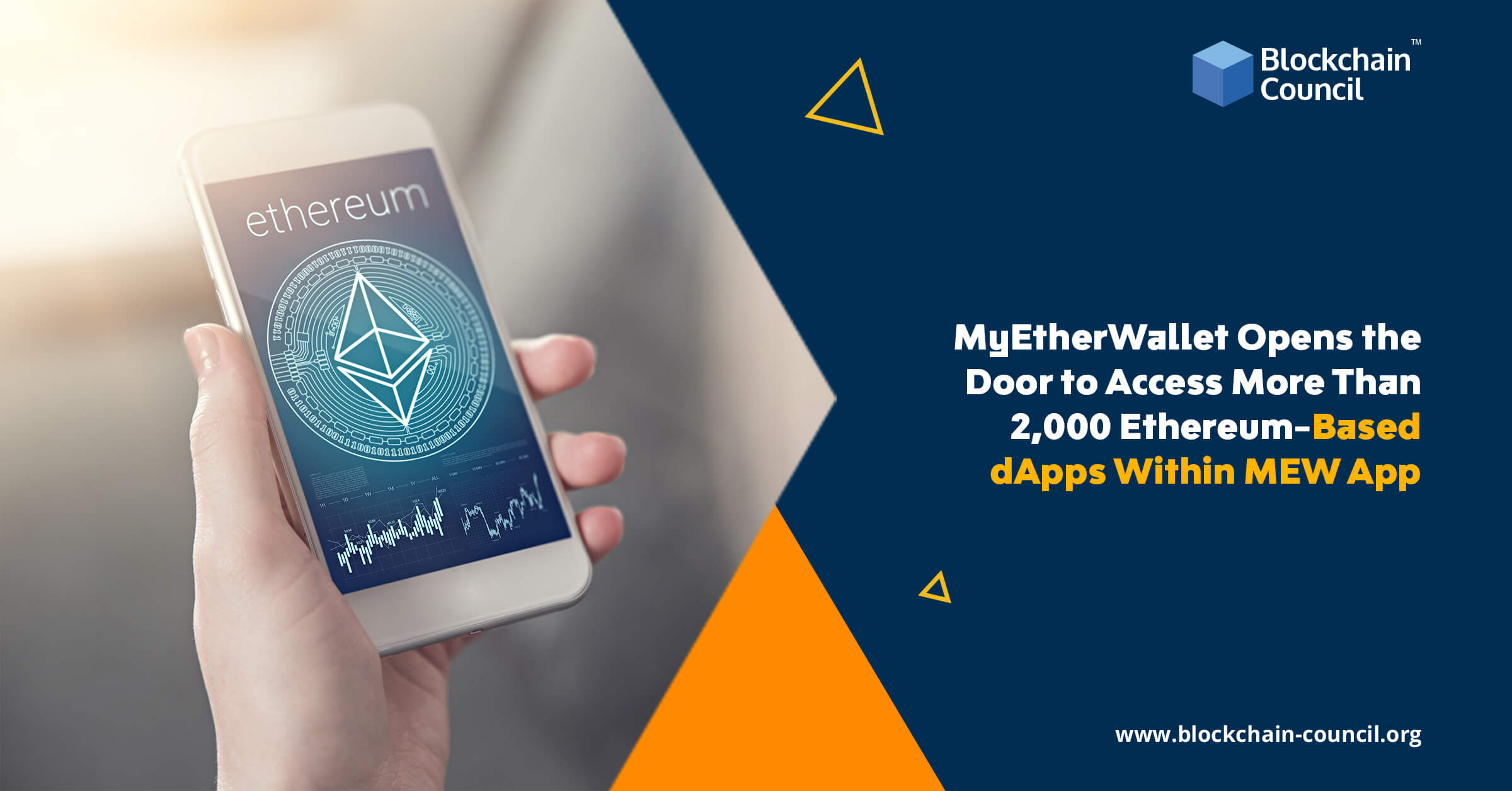
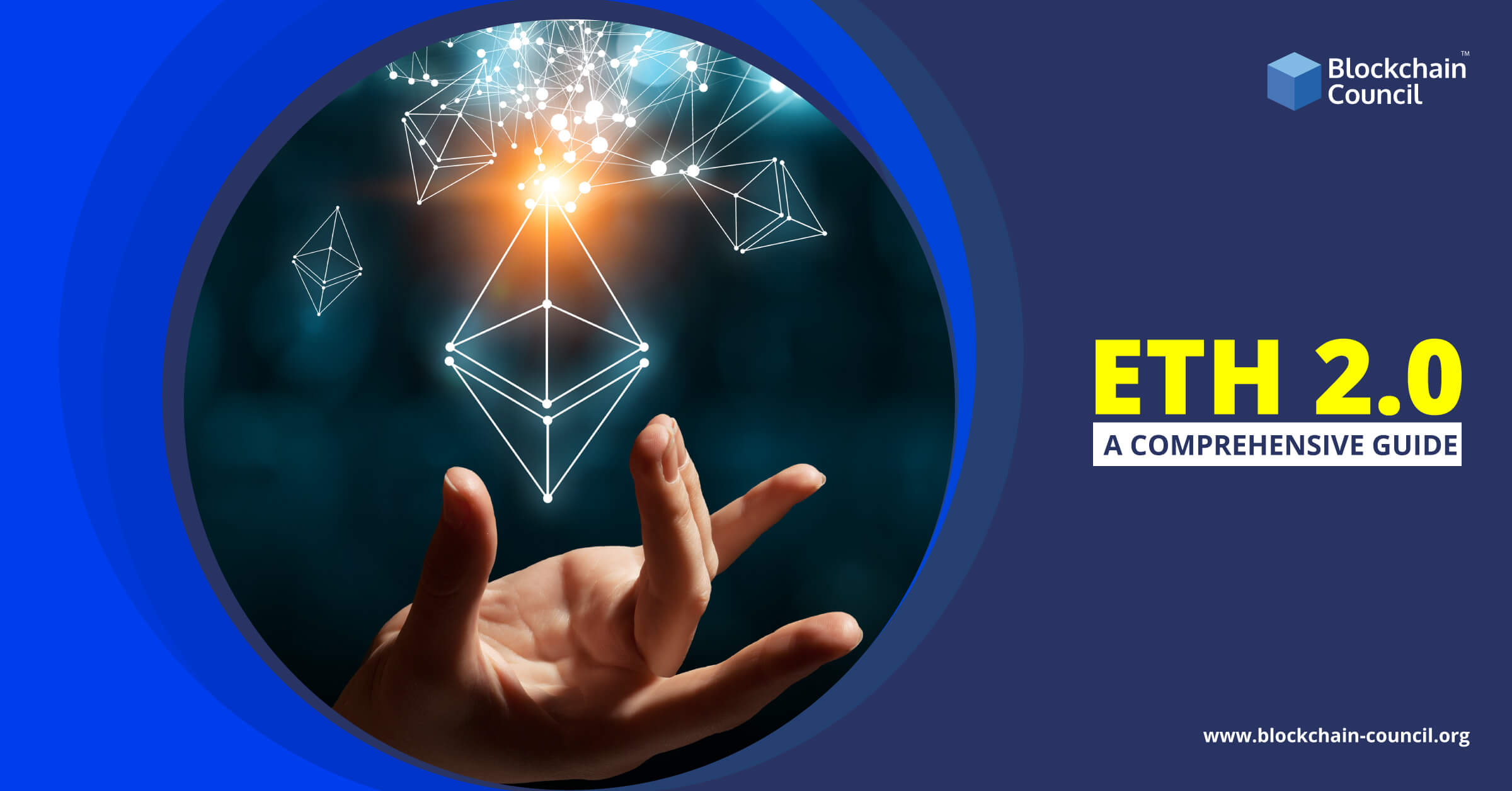
 Guides
Guides News
News Blockchain
Blockchain Cryptocurrency
& Digital Assets
Cryptocurrency
& Digital Assets Web3
Web3 Metaverse & NFTs
Metaverse & NFTs
